Clubfoot Clubfoot is a congenital condition, one that a baby is born with in which the foot or feet turn inward It won't go away on its own, but with early treatment, children experience good results Clubfoot treatment includes the Ponseti method, a nonsurgical treatment to move the foot to the right position Appointments & AccessAbout 50 percent of children with clubfoot have it in both feet, a condition known as bilateral clubfoot Many parents find out their child has clubfoot during a prenatal ultrasound months or weeks before their child is born Once the child is born, the condition is clearly visible Ideally, treatment begins in the first month of a child's lifeMost babies can have their issue corrected without surgery, but surgery for babies with club foot has proven to be successful, too About 30 percent of kids born with club foot will need surgery again later in life if the problem recurs

Clubfoot Boston Children S Hospital
Club foot treatment in babies
Club foot treatment in babies-The Program at Children's Colorado is comprised of experts that treat clubfoot patients using the Ponseti Method (the International Gold Standard of treatment) from birth to teenage years Our multidisciplinary team works together to ensure each patient receives the appropriate attention and treatment for proper correction of the deformityThe Ponseti Method is a simple, and in skilled hands, very effective method of treating clubfeet It requires only skill, patience and plaster The Doctor takes the baby's foot in his or her hands and stretches the medial ligaments slightly and holds the foot in place while an assistant applies a cast After a week, the first cast is cut away
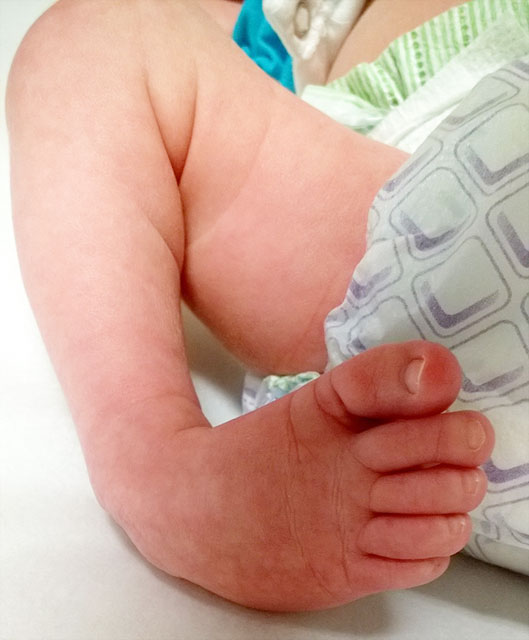



Clubfoot Johns Hopkins Medicine
2 Put a band aid on top of the foot with the card board on the bottom (make sure the stickie stuff does not touch the chicks foot) While doing this make sure the toes are spread The splint might fall off the first few times, but be patient and it will work just keep trying hope fully your chick does better `RyanTreatment should ideally begin shortly after birth, but older babies have also been treated successfully with the Ponseti method Elements of the method include Manipulation and casting Your baby's foot is gently stretched and manipulated into a corrected position and held in place with a longleg cast (toes to thigh)Clubfoot is a common type of birth defect that affects muscles and bones in the feet Instead of being straight, a clubfoot points down and turns in This twisting causes the toes to point toward the opposite leg A baby can be born with the defect in one or both feet A clubfoot isn't painful and won't cause health problems until a child
Clubfoot occurs in 1 out of 1000 births Ideally, treatment of clubfoot should begin around a week after birth That's when the bones, ligaments and tendons are still soft and can be easily moved into the correct position However, treatment doesn't happen for all babies Sometimes clubfoot goes untreated during childhood and even adulthoodClubfoot is caused by a shortened Achilles tendon, which causes the foot to turn in and under Clubfoot is twice as common in boys Treatment is necessary to correct clubfoot and is usually done in two phases — casting and bracing Children with clubfoot should be able to take part in regular daily activities once the condition is treatedHow will club foot affect my baby during and after treatment or surgery?
Treatment for club foot usually starts within a week or two of your baby being born The Ponseti method – Stretching and casting A technique known as the Ponseti method is the most widely used technique in North America and throughout the world, which uses gentle stretching and casting to gradually correct the deformityTreatment Your doctor will begin to correct your baby's clubfoot shortly after they're born Babies don't use their feet until they learn to stand and walk, so the goal is to fix it early Casting for Club Foot Using the Ponseti method, the clubfoot is manipulated or stretched every five to seven days and the plaster casts are changedThis baby is on one of his last treatments for his clubfeet and will then wear a brace for a few years An alternative to serial casting is a specialized physical therapy treatment program, in which your child undergoes daily
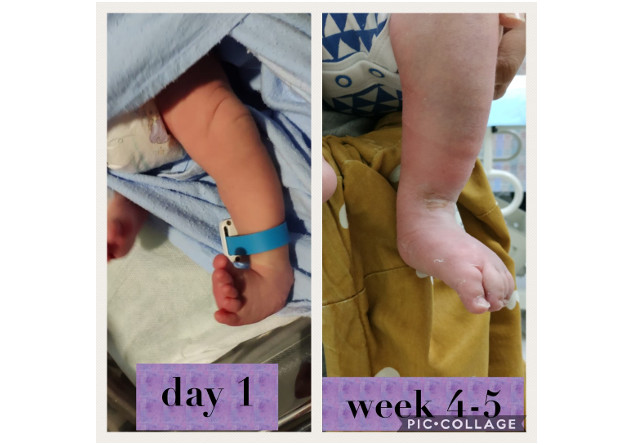



My Baby Has Clubfoot
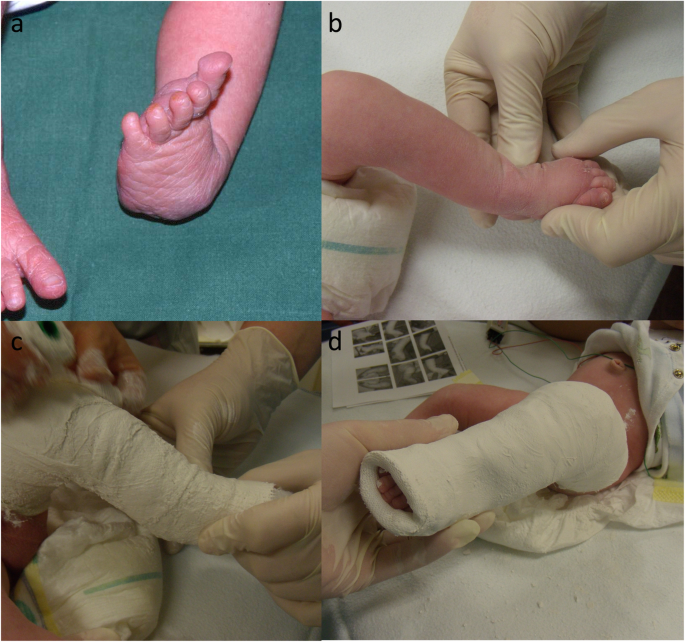



Clubfoot Treatment With Ponseti Method Parental Distress During Plaster Casting Journal Of Orthopaedic Surgery And Research Full Text
Clubfoot is a birth defect of the foot Some babies have clubfoot together with other health conditions, like spina bifida Clubfoot doesn't improve without treatment Treatment may include pointing, stretching, casting the foot and using braces With early treatment, most children with clubfoot can walk, run and play without pain Idiopathic clubfoot is a foot condition that typically affects otherwise healthy babies Idiopathic means "cause unknown" In a club foot, the entire foot is twisted "down and in," to the point that it looks like the feet are upside down, with the soles pointed upward In most cases, there is no known cause of idiopathic clubfootThe vast majority of babies born with clubfoot, a condition that causes the bones and soft tissues of the foot to twist inward, are successfully treated by doctors at Hassenfeld Children's Hospital at NYU Langone using the Ponseti method However, a small percentage of children may still have structural abnormalities in their feet, even after




How Parents And The Internet Transformed Clubfoot Treatment Shots Health News Npr
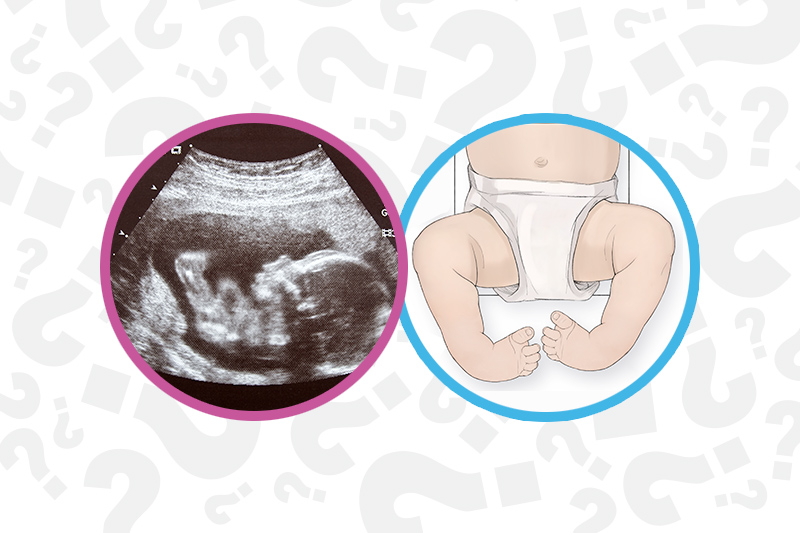



When Your Baby Has Clubfoot Answers For Expecting Parents Boston Children S Answers
Ideally, treatment begins within one month of a child's birth, when their feet and ankles are at the earliest possible stage of development Ponseti method The Ponseti method is the most common and effective clubfoot treatment This treatment uses a series of casts and braces to rotate the baby's foot into a corrected positionClubfoot Treatment Ponseti Method Baby Book Treatment Journal BabynBoots 5 out of 5 stars (1) $ 2905 Add to Favorites Blue Club Foot Boot Covers bluebellekc 5 out of 5 stars (93) $ 1500 Add to Favorites Light Blue Clubfoot Bar Cover bluebellekcThe cause of clubfoot remains uncertain, but many researchers believe the condition is genetic, as it often runs in families Clubfoot is more common in males than females and affects about one in every 1,000 births Each year, this amounts to 4,0008,000 affected infants in the United States and 130,,000 affected children worldwide




Marlowe S Clubfoot Journey How One Mom Went From Devastated To Reassured Children S Wisconsin
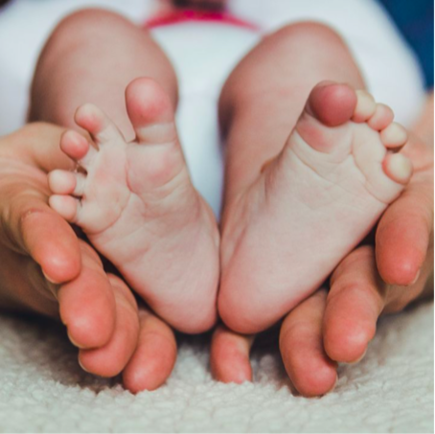



Managing Children With Clubfoot Course Evaluation Report Physiopedia
The Department of Orthotics and Prosthetics works with the Division of Orthopaedic Surgery & Sports Medicine to treat babies and young children with clubfootFetal clubfoot is a congenital foot deformity in which the foot is curved inward Treatment with casting is usually successful, but the use of a brace after casting is necessary to prevent the deformity from reoccurring"Untreated" clubfoot is defined as a clubfoot that has had no treatment before walking age which is usually about 1 year Once a child starts walking on an untreated clubfoot, the lack of treatment leads to the clubfoot being defined as "neglected" The neglected clubfoot presents with bony deformity as the bones ossify according to how the child has been weightbearing on them Treatment for clubfoot Treatment for clubfoot usually begins two weeks after birth It involves using plaster casts to gradually put the foot back into its correct position The plaster casts are changed weekly for 68 weeks Babies then need to have a procedure to lengthen their Achilles tendons, followed by another plaster cast for 23 weeks




Clubfeet Move And Play Paediatric Therapy



Clubfoot Orthoinfo os
Club foot (also called talipes) is where a baby is born with a foot or feet that turn in and under Early treatment should correct it In club foot, 1 foot or both feet point down and inwards with the sole of the foot facing backwards Club foot happens because the Achilles tendon (the large tendon at the back of the ankle) is too short Clubfoot is a condition in which a child's foot points downward and twists inward The foot can sometimes look like the head of a golf club, giving the condition its name Affecting about 1 in 1,000 babies in the US, clubfoot is one of the most common birth defects, and boys are twice as likely as girls to have itTreatment for clubfoot Treatment for clubfoot usually involves a series of casts called the Ponseti technique to gradually reposition the foot About 90% of babies will also require a surgical procedure to lengthen the Achilles tendon in their heel After the tendon heals, your child wears a brace to prevent the clubfoot from recurring




Clinical Photographs Showing A The Club Feet Of A 1 5 Month Old Baby Download Scientific Diagram
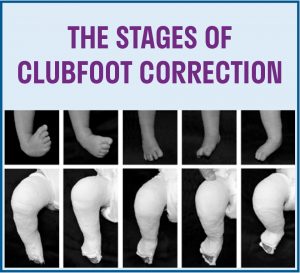



Treatment Strategies Paley Orthopedic Spine Institute
When treatment begins within the first three weeks after birth, most infants grow up without any physical symptoms, pain, or walking dysfunction due to clubfoot This treatment has a success rate of greater than 90 percent, and results can be seen after one or two weeks of castingFor parents with no family medical history of clubfoot, and no other children with clubfoot, the chance of having a child with clubfoot is 1 in 1,000 If a child is born with clubfoot, then future siblings have a 3% (3 in 100) chance of having the same condition Parents who had clubfoot have a 30% chance of having a child with clubfootClubfoot is when babies are born with 1 foot or both feet pointing down and in Their toes point toward the opposite leg, and the bottom of their feet face inward In some cases, it looks like the baby's foot is upside down A clubfoot cannot be straightened simply by moving it around The joints and tendons on the inside and back of the foot




Predicting Recurrence After Clubfoot Treatment Lower Extremity Review Magazine
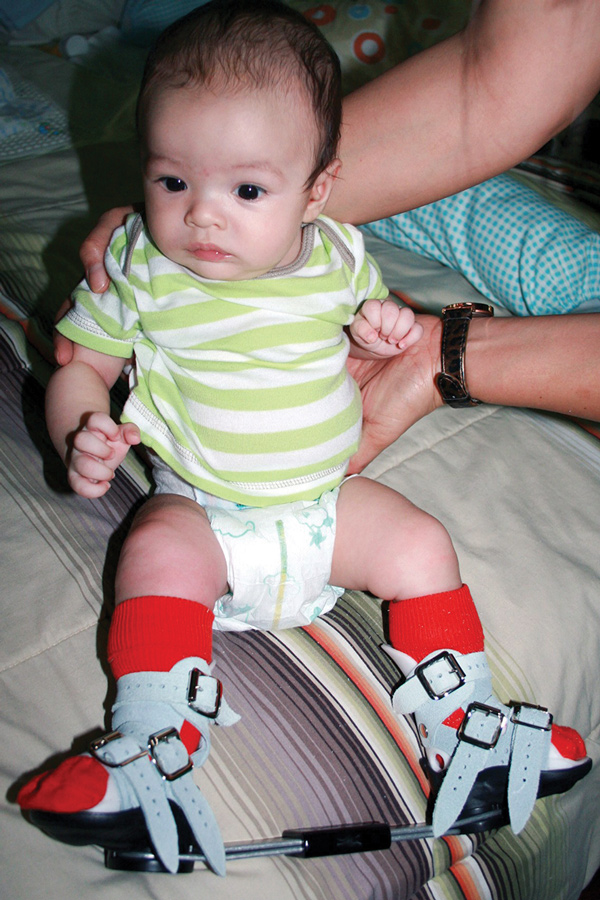



Gait Analysis For Clubfoot May Reveal Long Term Issues Lower Extremity Review Magazine
These clubfoot stretches are essential to help your child during the bracing phase of treatmentFor more information about clubfoot, visit https//kidshealtClubfoot Clubfoot is a deformity in which an infant's foot is turned inward, often so severely that the bottom of the foot faces sideways or even upward Approximately one infant in every 1,000 live births will have clubfoot, making it one of the more common congenital (present atJoin my Telegram https//tme/english_by_Anish_SirUnacademy https//unacademycom/@anishpathakInstagram @pathakanish #HowtoprepareforNDA#NDAFacts#NDAFr




Club Foot Talipes In Babies Causes Signs Treatment Youtube




How Parents And The Internet Transformed Clubfoot Treatment Shots Health News Npr
Clubfoot is the most common congenital birth defect, affecting an estimated one in every 1,000 newborns Babies born with clubfoot may have it in one or both feet Top of the foot turns inward and downward (foot can appear upside down if turn is severe) Calf muscles don't fully develop above the affected ankle With early treatment, children with clubfoot can grow up to wear regular shoes, take part in sports and lead full, active lives If only one foot is involved, the affected foot is generally 1 to 15 shoe sizes smaller than the unaffected one, the leg isClub foot and similar pediatric foot problems are typically discovered when the baby is born or during an ultrasound while the baby is in utero For club foot, the baby's foot turns inward and downward at birth and cannot be placed in the typical position of an unaffected foot Club foot can affect one or both feet




Treating Clubfoot In Babies Advanced Foot And Ankle Care Center




Overcoming Clubfoot One Mom S Story Parents
Without treatment, your child would have trouble walking Treatment choices include Nonsurgical treatments These are often tried first no matter how severe the deformity is The most common treatment in the US is the Ponseti method It uses gentle stretching and a cast to slowly fix clubfoot It often takes about 2 to 3 monthsThe baby may feel uncomfortable at first when trying to alternatively kick the legs However, the baby will soon learn to kick both legs simultaneously and feel comfortable In children with only one clubfoot, the shoe for the normal foot is fixed on the bar in 40 degrees of external rotation During the daytime the children wear regular shoesClubfoot Treatment The treatment of the condition depends on the doctor's assessment of the severity of the situation Here are a few remedial actions which may be adopted 1 Ponseti Method The most common method of treating clubfoot in babies is the Ponseti method It involves stretching and casting of the affected foot




A F A A 7 Month Old Girl Presented With Unilateral Clubfoot With Download Scientific Diagram



A Pair Of Shoes Can Change A Life Our Clubfoot Journey
Clubfoot treatments aim to provide better foot appearance and mobility before a baby learns to walk and prevent longterm problems The following are the clubfoot treatments for babies 1 Stretching and casting (Ponseti method) This treatment method involves moving the baby's foot into the correct position and placing it within a cast And, with proper treatment, a significant majority of clubfoot patients enjoy 100 percent recovery Successful treatment enables them to walk normally and even participate in athletics Please note that, although the condition looks painful, the baby experiences no pain or discomfort due to clubfootPediatric Clubbed Foot Clubfoot, also known as talipes equinovarus, is a congenital (present at birth) foot deformity It affects the bones, muscles, tendons and blood vessels and can affect one or both feet The foot is usually short and broad in appearance and the heel points downward while the front half of the foot (forefoot) turns inward




Club Foot Symptoms And Treatment




Braces For Hope Clubfoot Solutions
Clubfoot is the sort of condition that responds well to treatment—but because that treatment is reliant upon the baby's natural growth, you can't afford to wait for a better time Complete our contact form or call us today we have the experience necessary to put your baby on the path toward a normal, painfree life Clubfoot treatment There are two primary ways to treat clubfoot One way involves stretching to reshape the foot The other involves surgery Most cases of clubfoot can be successfully treated without surgery For the majority of babies, stretching and reshaping the foot is the best treatment option




To Parents Of Children Born With Clubfeet University Of Iowa Stead Family Children S Hospital




Starting Clubfoot Treatment For Our Son Cartwheeling Down The Aisle




A F A A 7 Month Old Girl Presented With Unilateral Clubfoot With Download Scientific Diagram




52 Club Foot Babies Ideas In 21 Club Foot Baby Club Foot Club



Clubfoot In Newborns Paedicare Paediatricians



Clubfoot Symptoms Stages Definition Description Demographics Causes And Symptoms Diagnosis




Clubfoot Orthopaedia
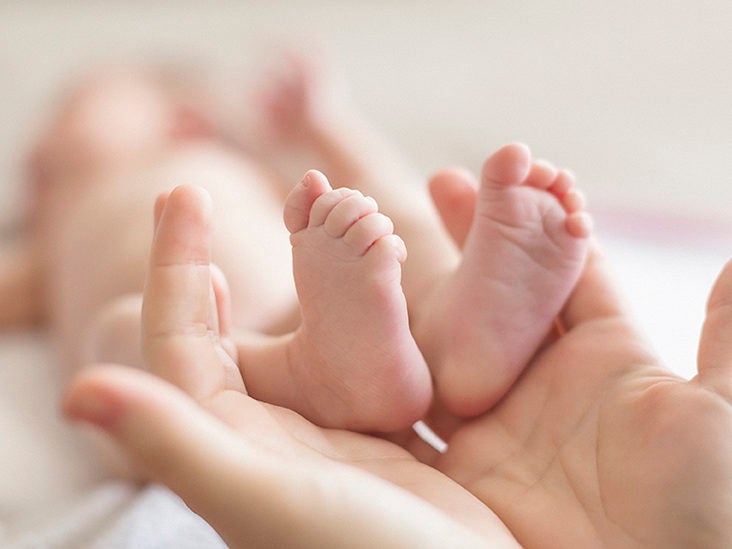



Clubfoot Repair Treatments Procedure Outlook




Topic Clubfoot Change Org




Predicting Recurrence After Clubfoot Treatment Lower Extremity Review Magazine



1
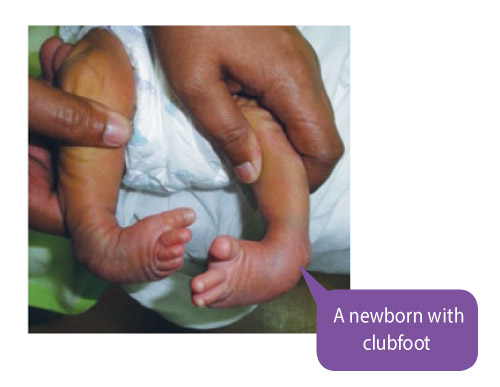



Treating Clubfoot Positive Parenting




A Step In The Right Direction Treating Clubfoot Sans Surgery Health Beat Spectrum Health




A F A A 7 Month Old Girl Presented With Unilateral Clubfoot With Download Scientific Diagram
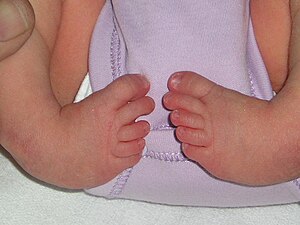



Clubfoot Wikipedia
:max_bytes(150000):strip_icc()/clubfoot_after-56a6fb603df78cf7729142e6.jpg)



Photos Of Babies With A Clubfoot




Clubfoot Challenges And Victories A Parent S Story Home And Horizon
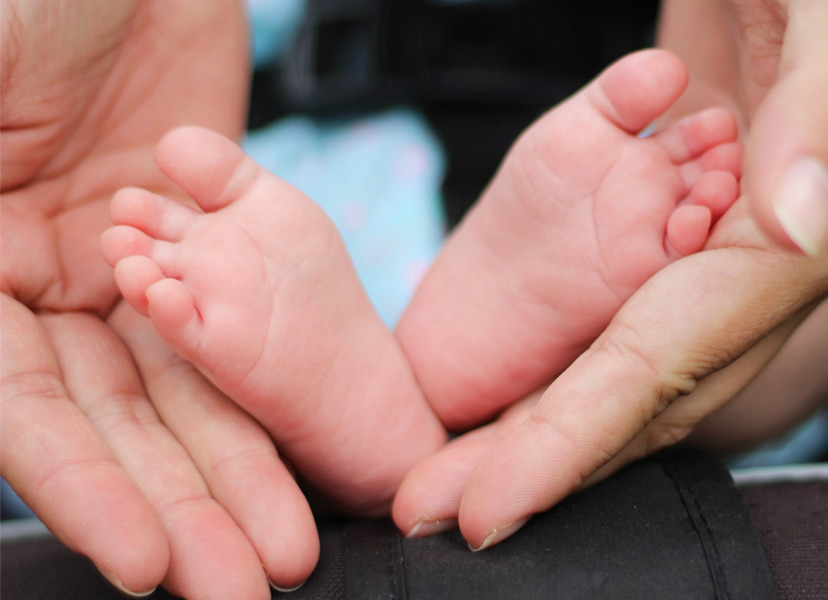



What Is Club Foot
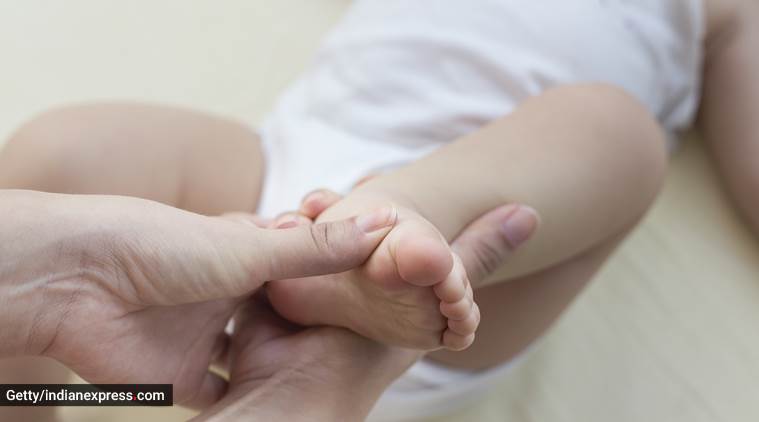



On World Clubfoot Day An Expert Answers All Your Questions About The Birth Deformity Parenting News The Indian Express




Clubfoot Boston Children S Hospital



1
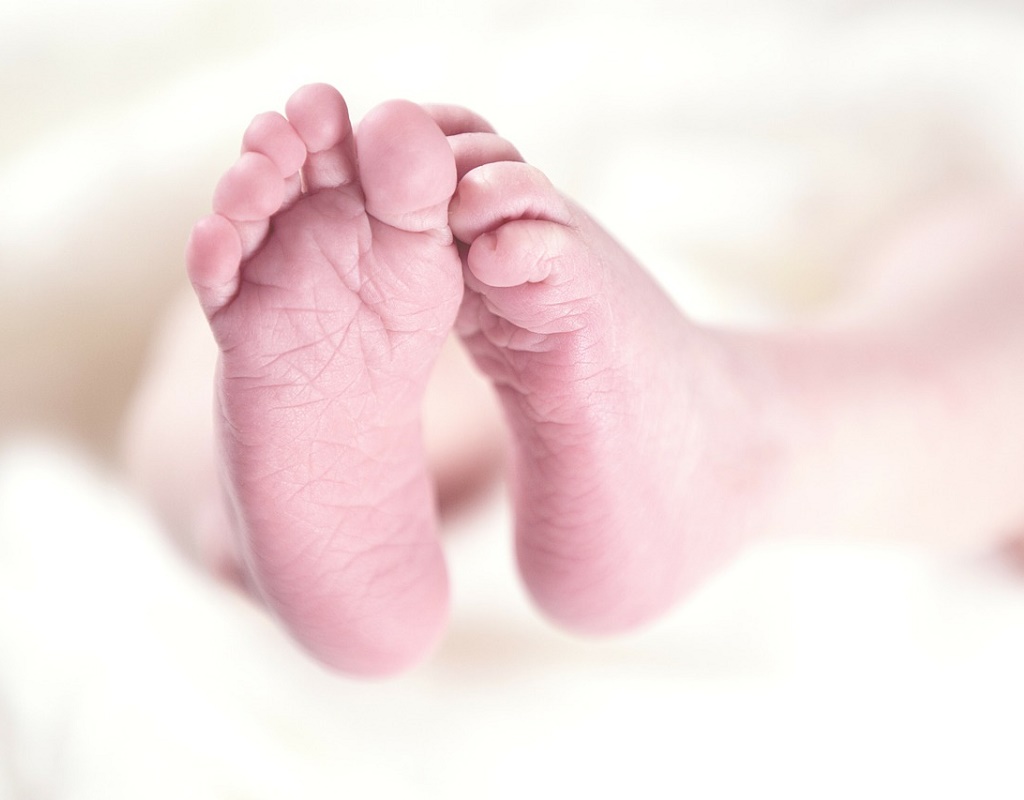



Club Foot Cause And Treatment Family Health Kidspot




Clubfoot Johns Hopkins Medicine
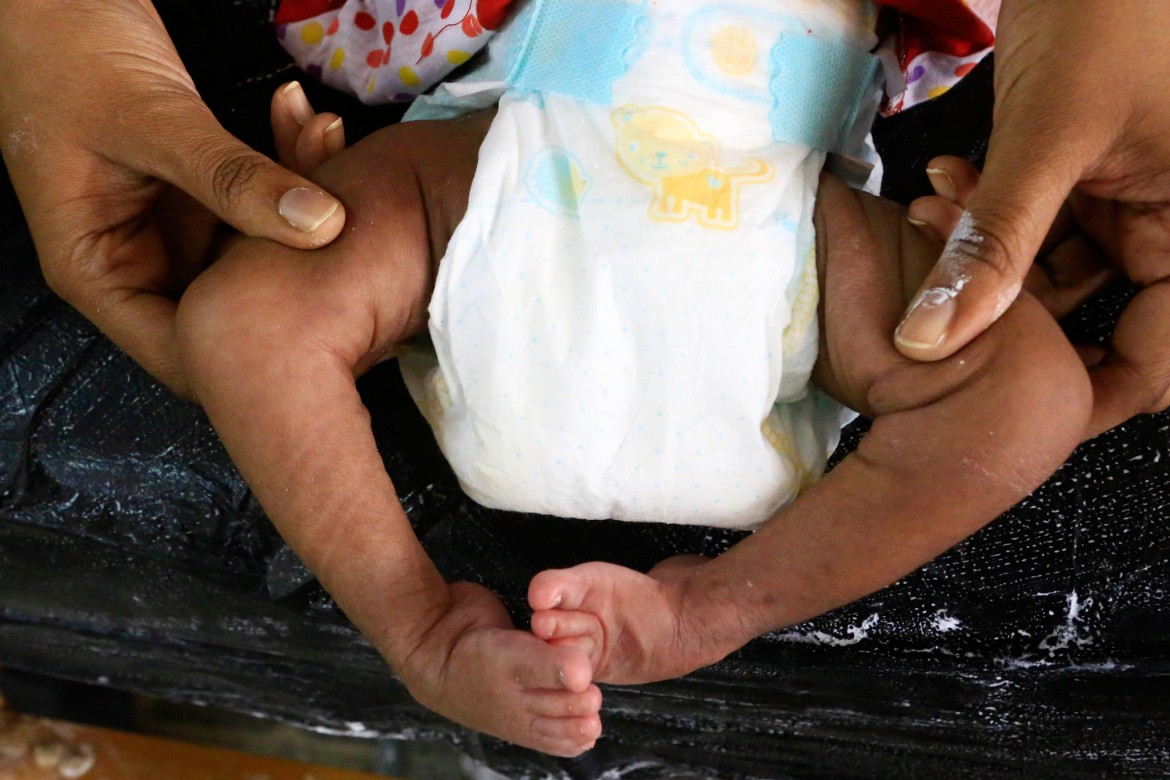



Sudan Treating Children Affected By Clubfoot Icrc




Club Foot Nhs
:max_bytes(150000):strip_icc()/clubfoot_before-56a6fb603df78cf7729142e3.jpg)



Photos Of Babies With A Clubfoot




Club Feet Beauchamp Foot Care Beauchamp Foot Care
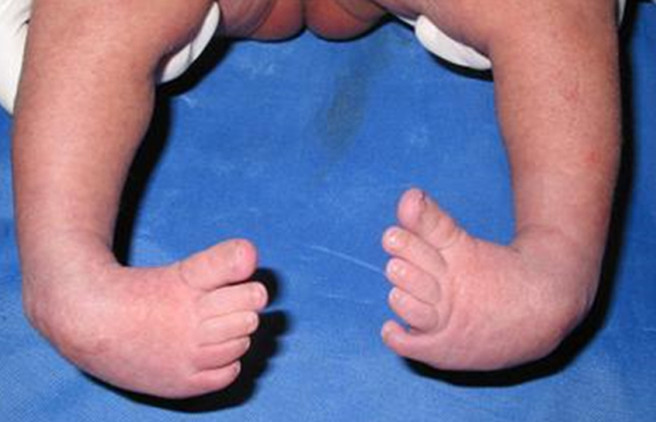



Clubfoot In Babies And Children



1




Clubfoot Curved Baby Feet Next Step Foot Ankle Clinic



Clubfoot Orthoinfo os




Canvassing Support Helping Children With Clubfoot c News
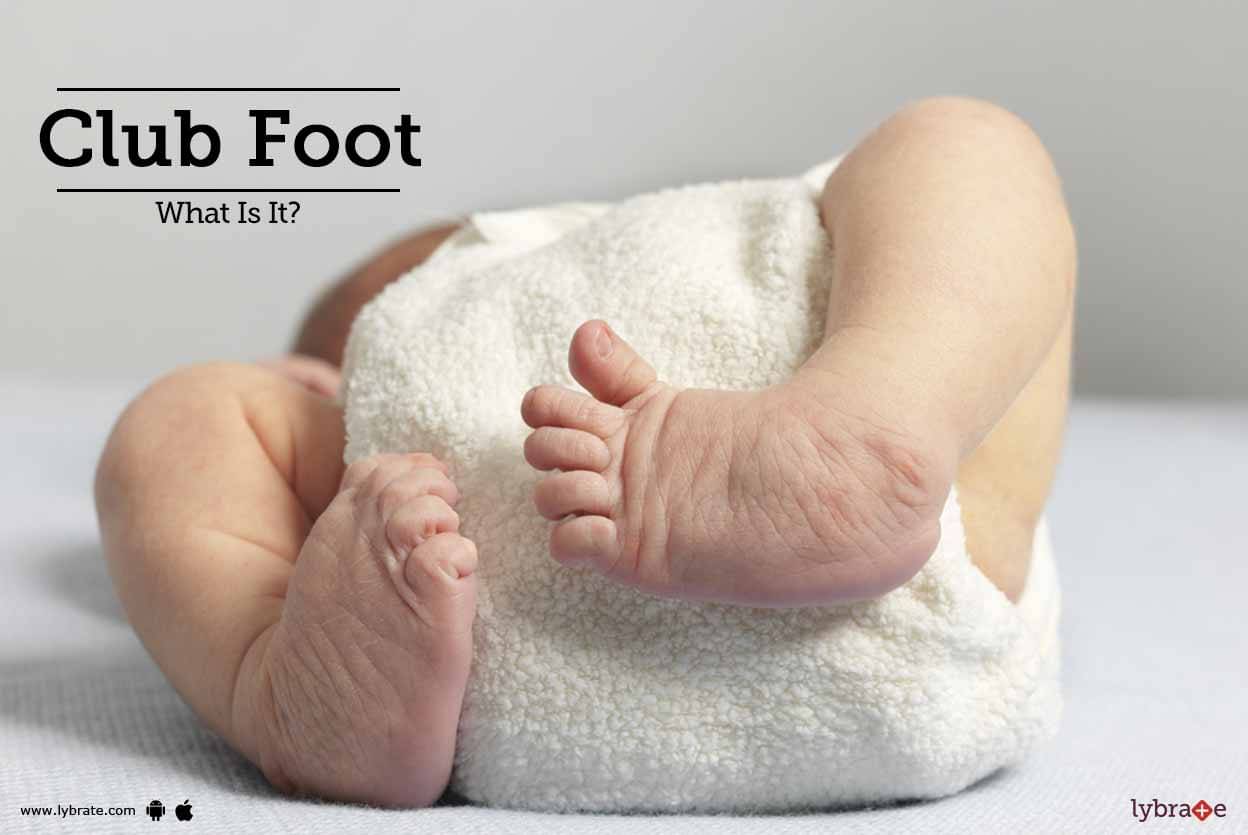



Club Foot What Is It By Dr Ravi Kant Gupta Lybrate




Clubfoot Diagnosis Treatment And Prevention Via Drgreene Com



Changing Steps One Clubfoot At A Time Our Blog




What Is Clubfoot And How Is It Treated An Overview Youtube




How Parents And The Internet Transformed Clubfoot Treatment Shots Health News Npr




Sudan Treating Children Affected By Clubfoot Icrc




Congenital Clubfoot Early Recognition And Conservative Management For Preventing Late Disabilities Springerlink
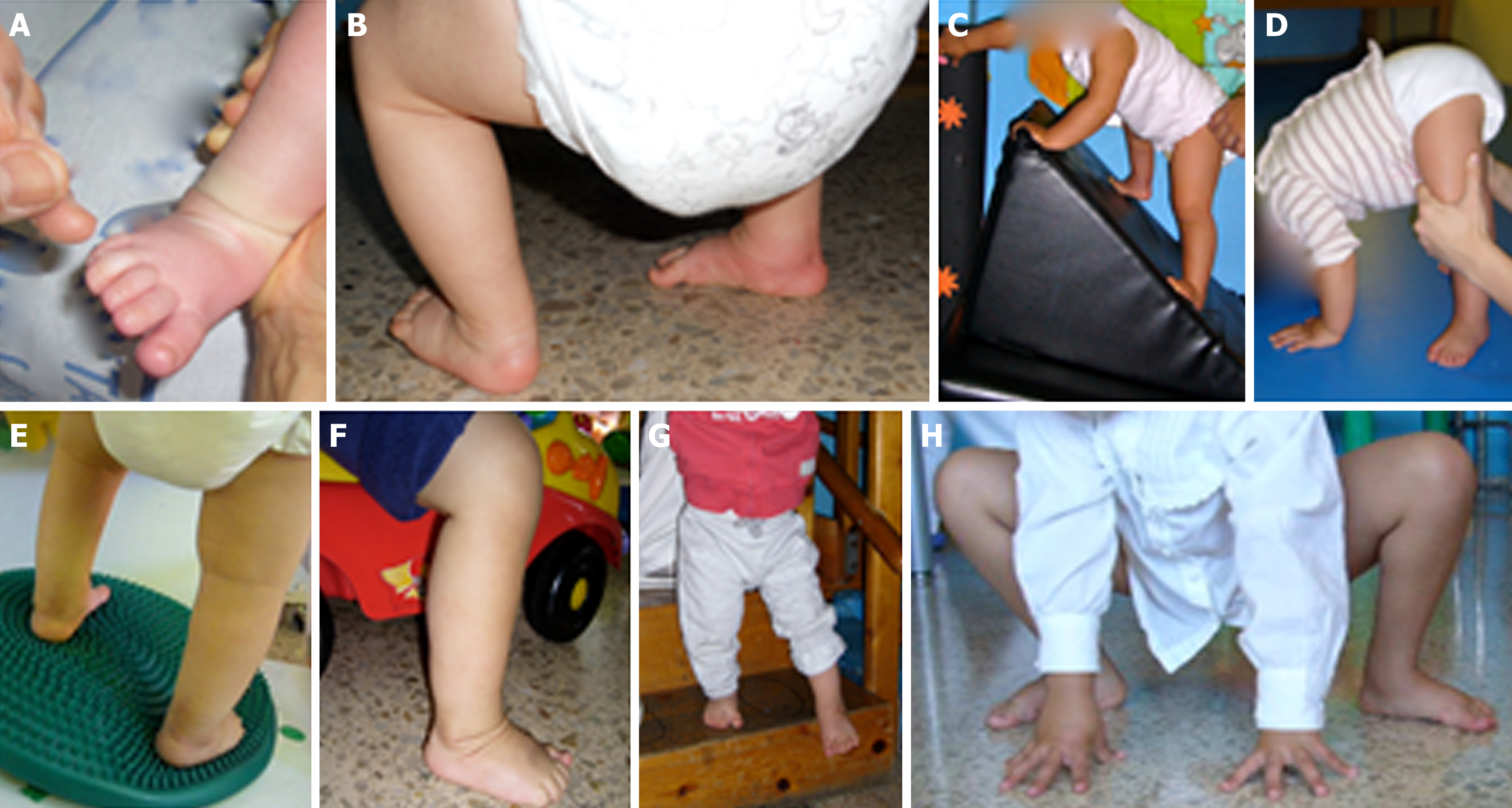



Functional Physiotherapy Method Results For The Treatment Of Idiopathic Clubfoot




Non Surgical Treatment For Clubfoot Helps Those Who Can T Afford It Pbs Newshour




Figure 2 From Study And Development Of An External Aid For Treating Congenital Talipes Equinovarus Ctev Semantic Scholar




Clubfoot Nemours Children S Health System
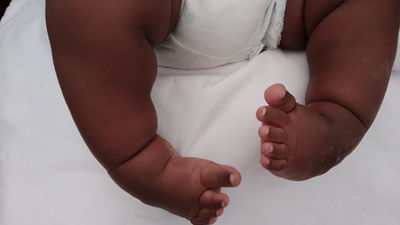



Clubfoot Why It Happens And How Doctors Treat It Daily Monitor




52 Club Foot Babies Ideas In 21 Club Foot Baby Club Foot Club
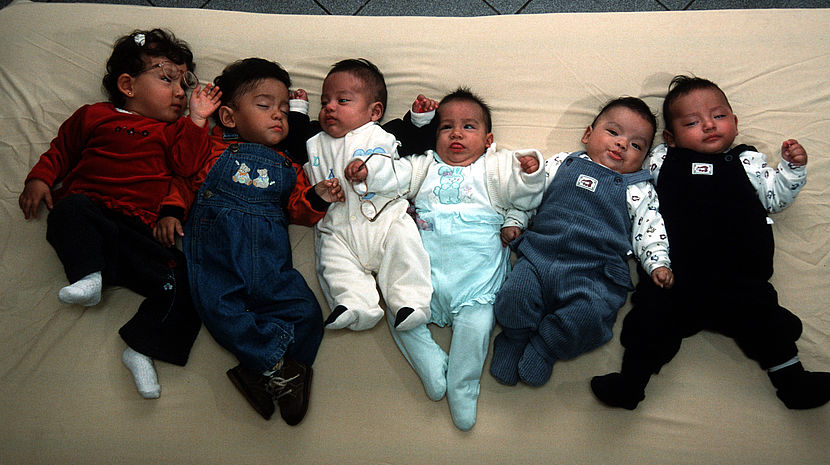



Cbm Org
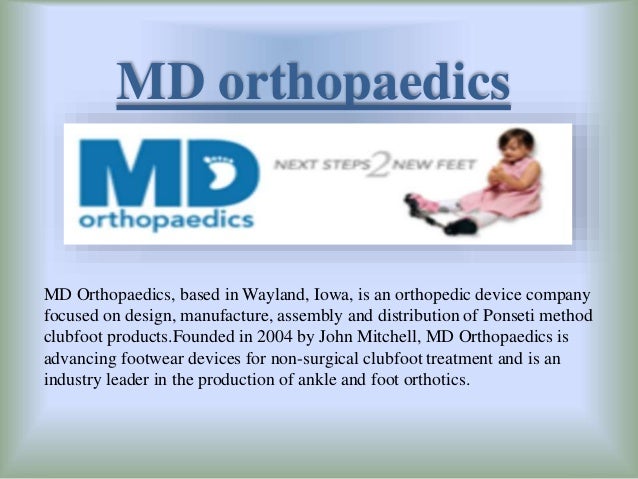



Clubfoot Treatment For Babies



Uganda Global Clubfoot Initiative
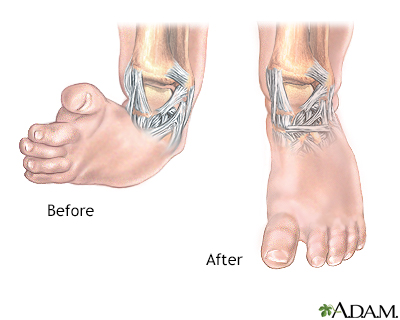



Clubfoot Information Mount Sinai New York




Clubfoot Healthdirect




Starship Resources For Children Coming To The Orthopaedic Clinic For Clubfoot




Club Foot Treatment Orthopaedic Institute For Children
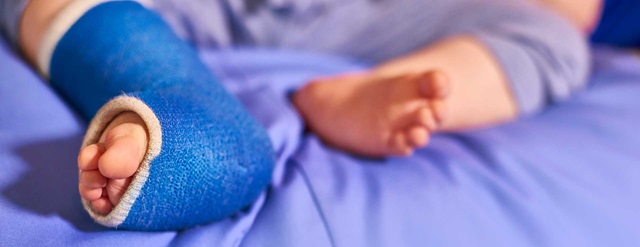



Clubfoot Johns Hopkins Medicine
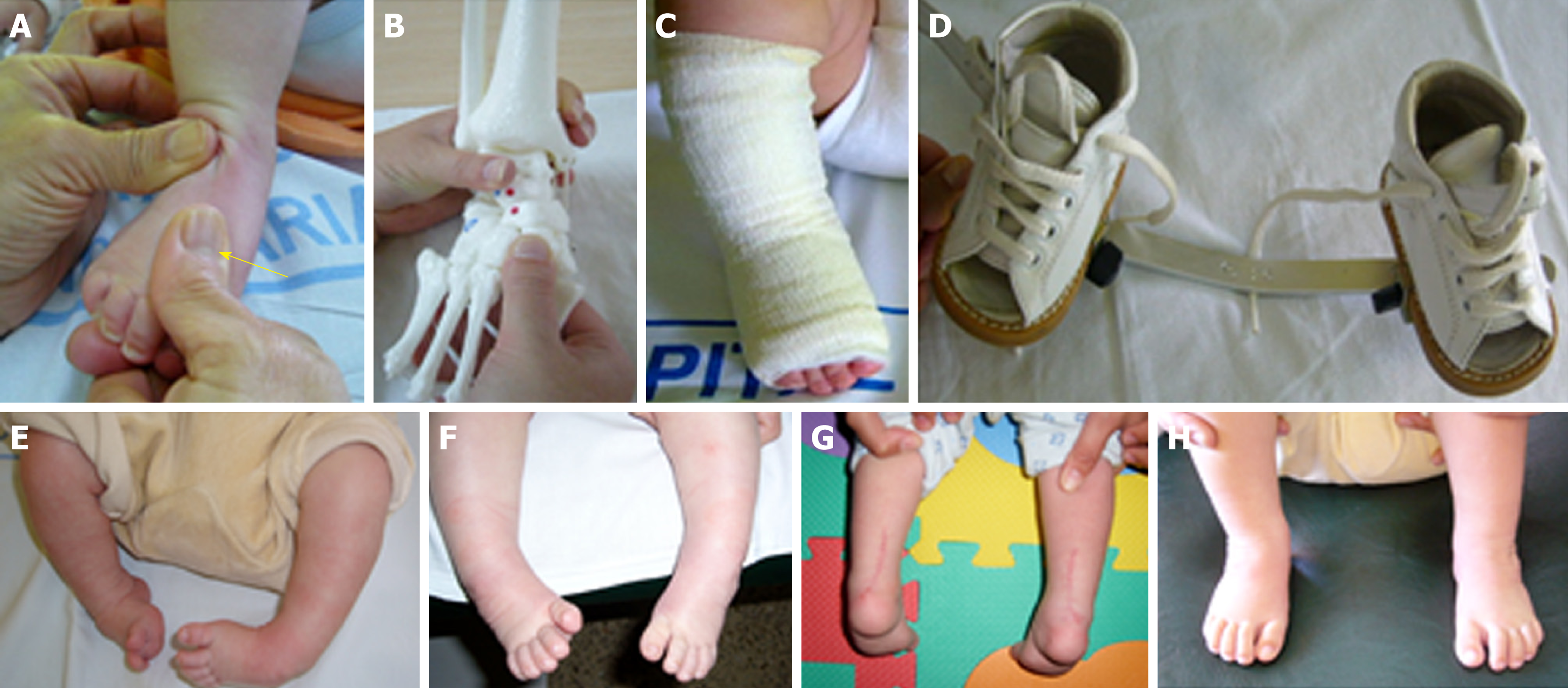



Functional Physiotherapy Method Results For The Treatment Of Idiopathic Clubfoot
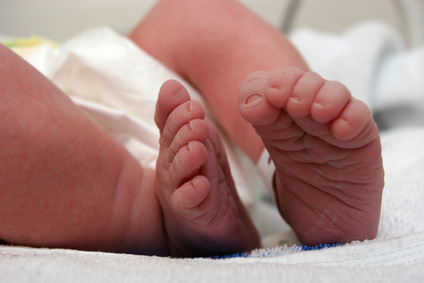



Talipes Club Foot Parents Powwow
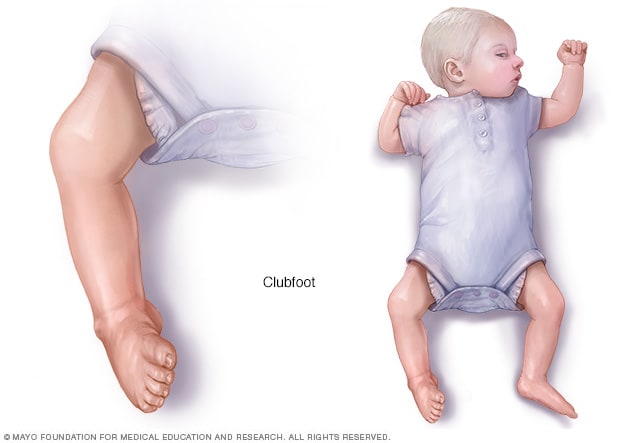



Clubfoot Symptoms And Causes Mayo Clinic
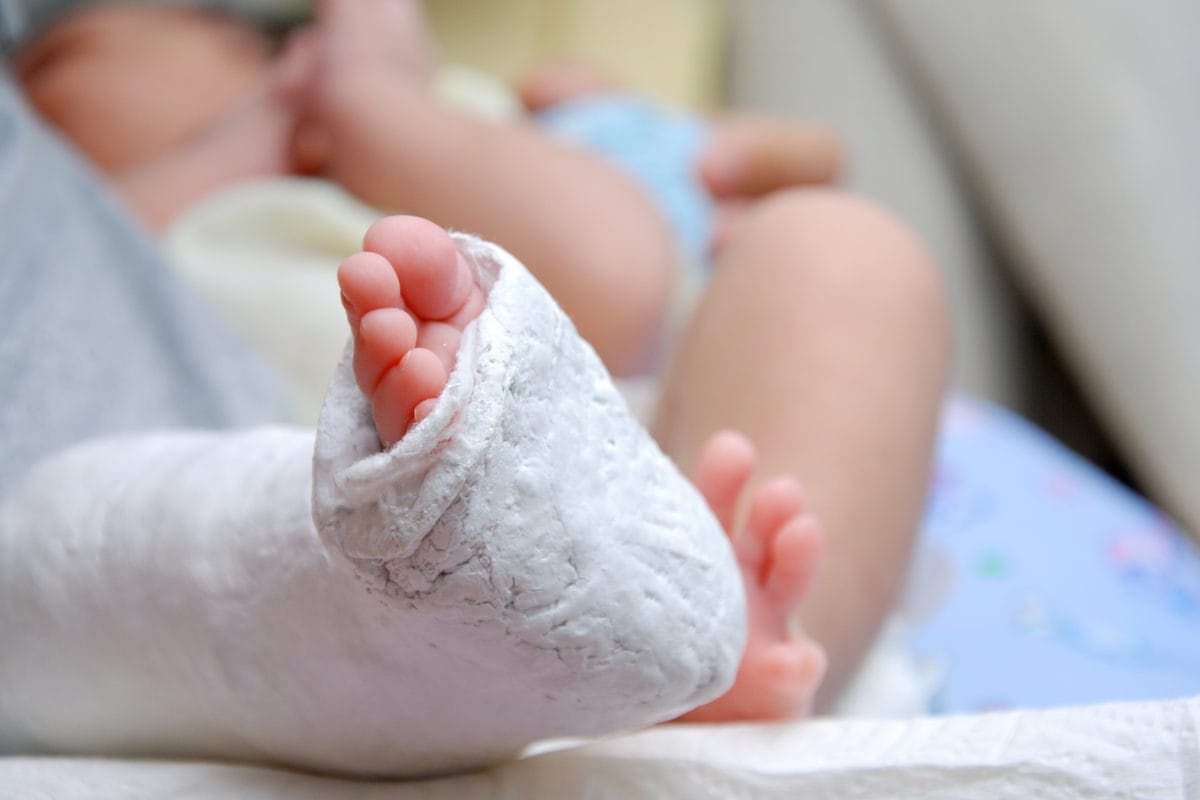



What Is Clubfoot Symptoms And Treatment Familydoctor Org
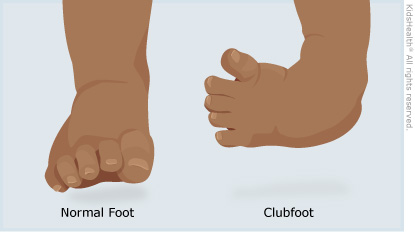



Clubfoot For Parents Nemours Kidshealth




Kentucky Family Describes Clubfoot Treatment Process Whas11 Com
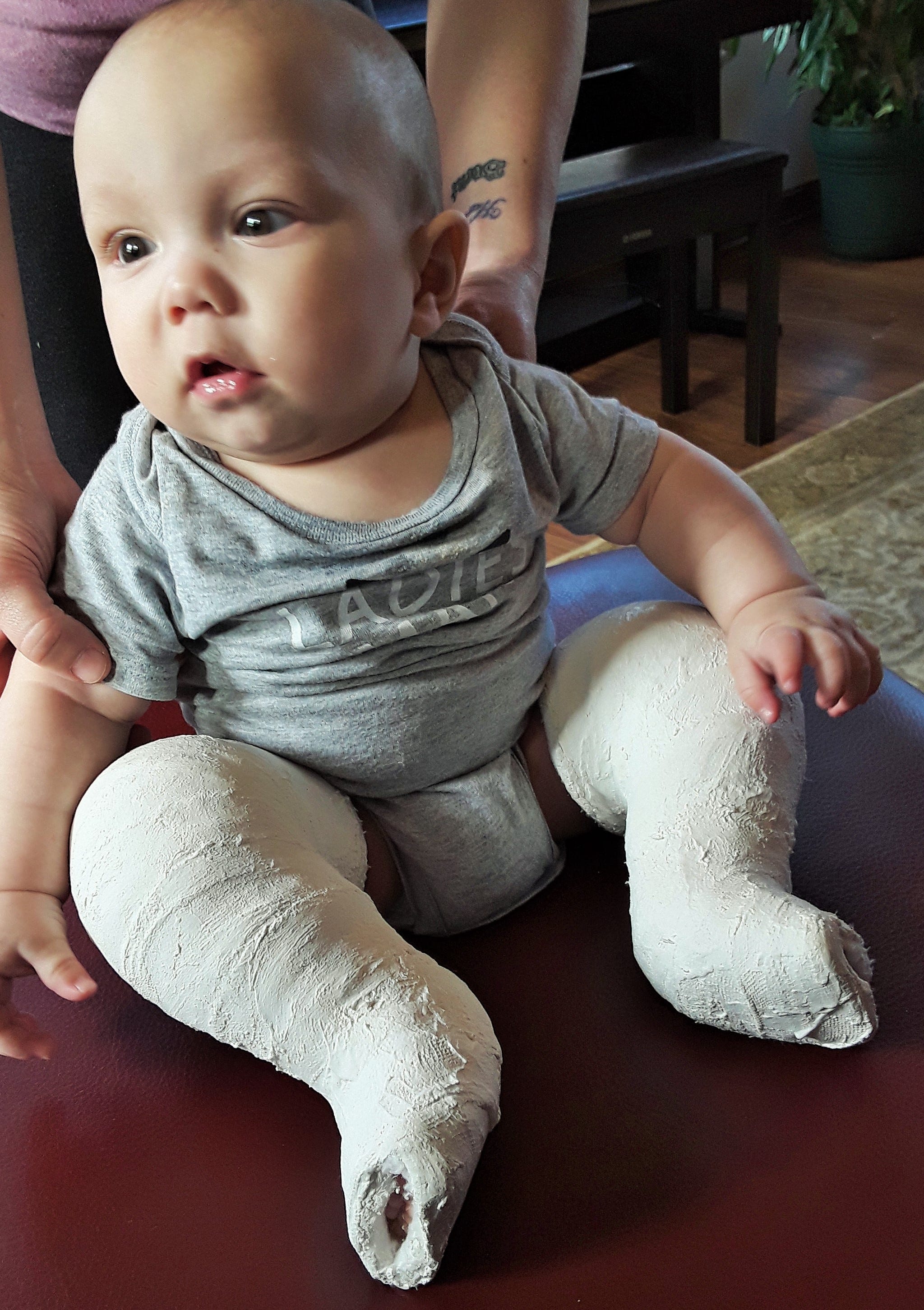



Clubfoot Treatment At Uihc Providing New Hope For Canadian Boy



About Clubfoot




Clubfoot Treatment For Children Surya Hospitals Pune
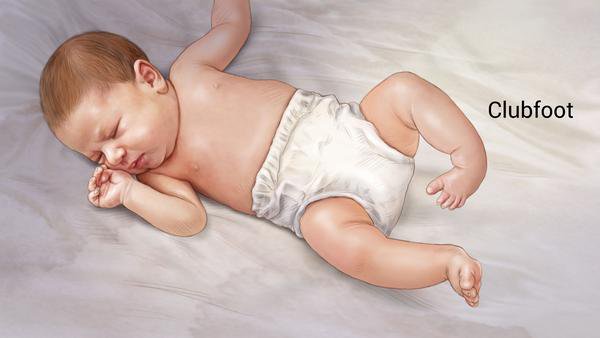



A Moms Tips On Dealing With Clubfoot Things To Do With Kids Things To Do With Kids
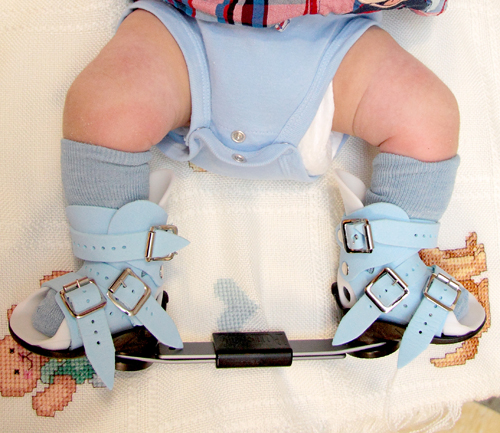



Clubfoot Baltimore Md International Center For Limb Lengthening




Clubfoot Clubfoot Pediatric Interesting Cases And Mcqs Facebook




Clubfoot Deformities Pediatric Orthopaedics Navicent Health Macon Georgia Atrium Health Navicent




Treatment Of Relapsed Residual And Neglected Clubfoot Adjunctive Surgery Journal Of Children S Orthopaedics
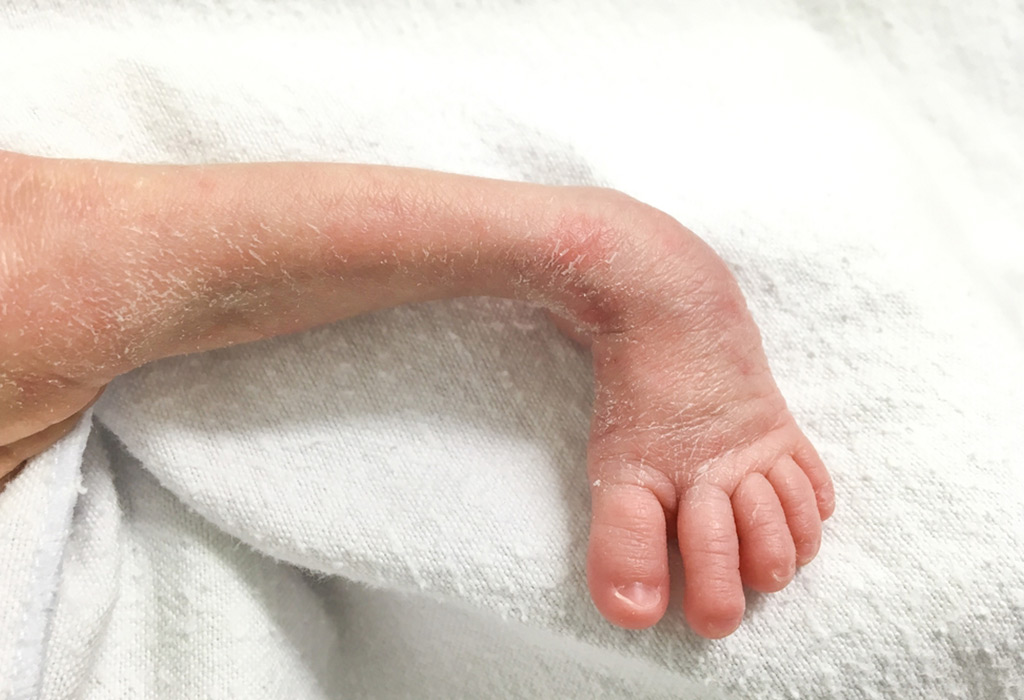



Club Foot In Infants Reasons Signs Remedies




To Parents Of Children Born With Clubfeet University Of Iowa Stead Family Children S Hospital
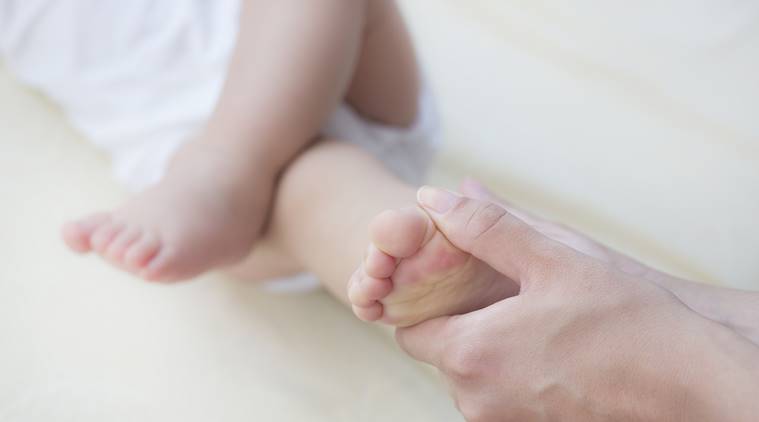



Treating Clubfoot Early May Help A Child Walk Normally Parenting News The Indian Express




Now Non Surgical Method To Treat Club Foot




Clubfoot Children S Orthopaedic And Scoliosis Surgery Associates Llp




Clubfoot Treatment With A Boots And Bar Orthosis




Clubfoot Referral Orthopaedic Institute For Children Physicians



3




Starship Resources For Children Coming To The Orthopaedic Clinic For Clubfoot
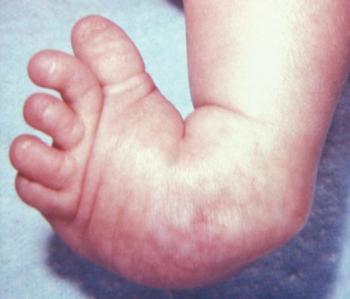



Clubfoot Causes And Treatments
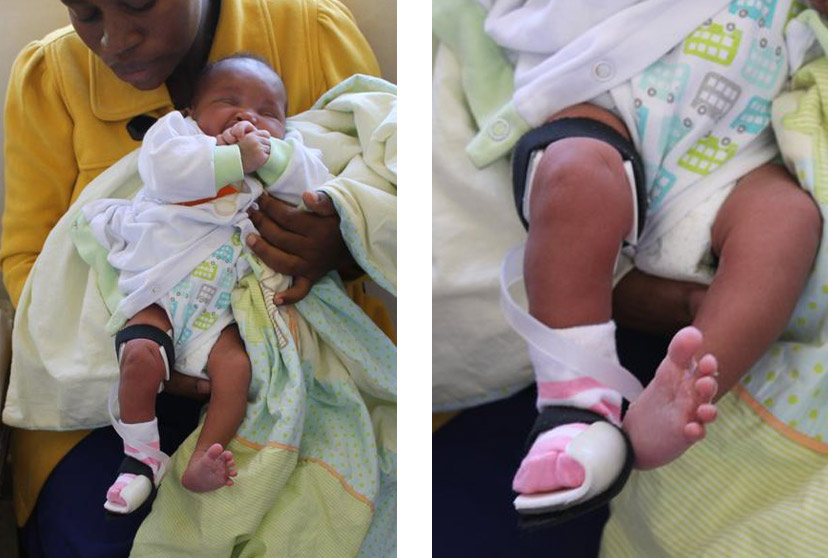



Club Foot Treatment



Partner Organisation Of The Month Zero Clubfoot Global Clubfoot Initiative




Club Foot



Ponseti Method Surpasses Surgery For Long Term Clubfoot Outcomes Lerpediatrics Com
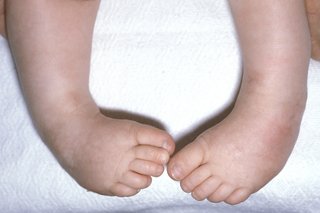



Club Foot Nhs




Clubfoot Treatment Services In Veerbhadra Nagar Pune Id




What A Paediatrician Should Know About Congenital Clubfoot Italian Journal Of Pediatrics Full Text


